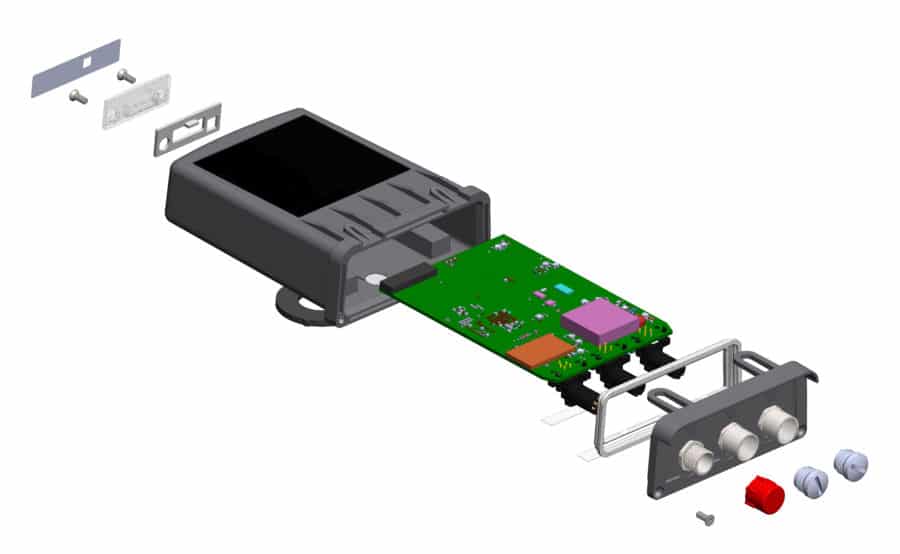Developing the next generation telematics computer
One of Sweden’s leading developers of telematics solutions for the haulage, heavy machinery and transportation industry came in contact with Hectronic when it was time for them to update their telematics computer. They offer electronic mileage logbooks, fleet management systems and customized IoT systems amongst other thing. Their customers span between large international companies to smaller local businesses, the denominator being vehicles and transportation. Now they are aiming to be one of Swedens biggest telematics suppliers. The next generation telematics computer is one of the steps to reach that goal.

The Challenge
A mutual client linked the customer and Hectronic together. The expectation was that we together could develop and deliver a telematics solution with multiple interfaces adapted to harsh environments. The customer is a long time supplier to the client in question. But when the customer requested a unit that required both hardware and software updates, they reached out to Hectronic. The starting-point was that the current solution needed to be updated and that the new version included all the requirements from the customer. But early on it became clear that the unit needed a full re-design. Otherwise it wouldn’t to be able to perform and deliver according to the new requirements. And with this, the project became bigger than initially intended.
What the customer requested was a new solution for their telematics computer. The new solution would be used to get their software solution to their users. In this case the mutual customer had specific demands. Due to the environmental conditions the specification of requirements was extensive. The unit will be mounted to a moving vehicle and therefore it needs to be adapted to the harsh environment. It needs to be resistant against mineral oil, petroleum oil, hydraulic oil, diesel, salt water and AdBlue. Apart from that it also has to be shock and vibration resistant and have industrial temp to be able to function correctly in some of the working environments. The mounting options needed to be multiple due to the variety of vehicles it would be mounted to.
Rugged for harsh environments
Heavy machinery is often operating in harsh environments and the unit will have daily interaction with cold, vibration, shock and humidity. Despite this, the new solution needs to function as required and be able to communicate without intrusion or abrupt errors. Due to the diversity in clientele, the customer wanted the unit to be suitable for global remote monitoring of heavy machinery with remote access. Thus the connectivity possibilities needed to be versatile to avoid any interruptions, even if the unit is operating below ground. This is one of the main reasons for the need to do a total redesign instead of doing an updated version of the current telematics computer. The customer wanted a solution with more interfaces to meet the tougher requests from their customers. Over all, the new solution contains a lot of new features that will give them a great opportunity to broaden their customer basis.

The process
Even though the project became more extensive than initially intended, the process came to a quick start. The customer had clear directions and specifications of requirements and extensive knowledge in telematics solutions. This made it easy to have and open dialog and make fast decisions if needed. That, combined with Hectronics expertise in hardware, made this project a road with very few bumps in it.
Hectronic works by an ISO 9001:2015 certified development process to ensure quality and time efficiency. The customer is involved in a big part of the different steps and approves to the finished result before it goes in to manufacturing and eventually to being handled by Hectronics life cycle management program.
Building blocks
The CPU architecture in the new telematics computer is based on Hectronics building block method. This is a way of working that will ensure that the finished product is stable and thoroughly tested. That way the time spent on development and verifications is shortened. This is both time and cost efficient, and will at the same time give you a more reliable solution.
When it came to the design specification, the unit needed to have multiple mounting possibilities. It should be easy for the customer to mount it on different parts of a vehicle without modification. There also shouldn’t be any limitations concerning which type vehicle the unit is mounted to. Thus Hectronic aimed to design the unit with a built in antenna and as compact as possible to suite all possible needs.
Several prototypes of the unit were produced to be the subject of the upcoming testing and verifications. To ensure a high product quality, Hectronic did a series of tests, all as a part of the development process. The verifications and tests that were done were to make sure that the unit lived up to expectation when I came to industrial temp, vibration, dust and fluid resistance. The test system has been developed by Hectronics engineers. The same test system is later used in the production line. All results are later evaluated and stored to keep track of production quality over time.
The result
The customer’s request resulted in a solution with a Linux based OS. This will make the integration both easy and affordable. It includes WiFi/BT and 4G/GSM for both local and cellular connectivity and a GNSS receiver (GPS, Glonass, Galileo and BeiDou) was also added for navigation. That makes the unit suitable for both monitoring vehicles with remote access and for collecting data.
There are multiple options for customization to suit different customers control systems and engines. The unit is customized by using the configuration file in Python. Customization of different CAN information is easily configured in an XML file. With the new and improved interfaces it’s possible to collect data and different KPIs. It’s also adaptable to different control systems
The unit is resistant against mineral oil, petroleum oil, hydraulic oil, diesel, salt water and AdBlue, vibration resistant and has industrial temp, it is fully designed to function in tough environments. The unit has been extensively tested to guarantee a long and low costing life cycle.
The customer is now aiming to expand their business and grow internationally and as a part of that, the certification process will be prolonged, and now they’re in the process of getting the telematics computer certified in over 80 countries. Apart from that it is also CE, FCC and E-mark approved.



